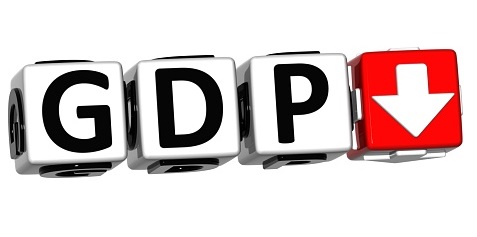Today’s US second quarter GDP came in at -0.6% vs -0.8% expected, which had helped to improve the markets mood somewhat. This can be seen by the rally in stocks.
Other data today showed Personal consumption coming in at +1.5% vs +1.1% advance reading. The Fed’s preferred metric to gauge inflation, Core PCE prices came in a +4.4% vs +4.4% as expected, while PCE prices advanced +7.1% vs +7.1%.
The market has pretty much shrugged-off the PCE readings, however, with back-to-back declines in growth, the fact is the USA economy has now met the criteria of technical recession.
US GDP already contracted by 1.6% in the period from January to March, the worst performance since the spring of 2020, when the economy was deep in the throes of the COVID-induced recession.
Today’s Q2 report was not pretty reading for economists as it showed declines in private inventories, residential and non-residential investment, and government spending at the federal, state and local levels.
Importantly those decreases were offset by increases in net exports, which is basically the difference between what the US exports and what it imports, as well as consumer spending, which accounts for two-thirds of GDP.
Gross domestic product is by definition the broadest measure of goods and services produced across the economy, shrank by 0.6% on an annualized basis in the second quarter, the Commerce Department said in its second reading of the data on Thursday. That is below the initially reported 0.9% decline.
As expected with high inflationary pressures the GDP report showed that consumers are spending far less than they were in the winter, with personal consumption expenditures climbing by just 1%.
With wages rising far less quickly than inflation the purchasing power of consumers in the United States is therefore decreased. If this remains a constant theme then the recession will worsen.
The NBER stated that stressed that it relies on more data than GDP in determining whether there is a recession, such as unemployment and consumer spending.
In terms of the market reaction we are seeing the US dollar falling. This could be because PCE did not increase, but stabilized, and with the economy in recession now the Fed may be inclined to act less aggressive. That is the thinking anyway.
With the buck declining the EURUSD has moved back towards parity and the British pound remains under pressure. The USDJPY pair has also retreated from the 137.00 level.
The Nasdaq is trading by around 1 percent higher, while the S&P 500 has gained over 0.50 percent intraday. The DJIA is the laggard amongst the three indices.
In the commodity sector gold prices have recovered above the $1,750 level, while both WTI and Brent oil are having a tough session, and both trades down by 1 percent.



